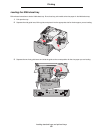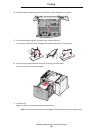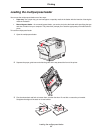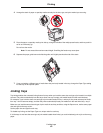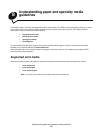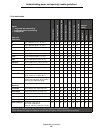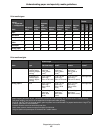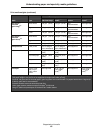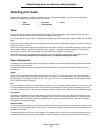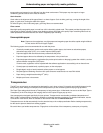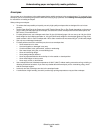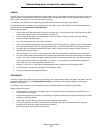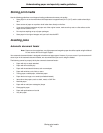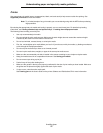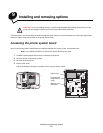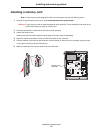
Selecting print media
67
Understanding paper and specialty media guidelines
Selecting print media
Selecting the appropriate print media for the MFP helps you avoid printing problems. The following sections contain
guidelines for choosing the correct print media for the MFP.
Paper
To ensure the best print quality and feed reliability, use 90 g/m
2
(24 lb) xerographic, grain long paper. Business papers
designed for general business use may also provide acceptable print quality.
We recommend Lexmark part number 12A5950 letter size glossy paper and Lexmark part number 12A5951 A4 size glossy
paper.
Always print several samples before buying large quantities of any type of media. When choosing any media, consider the
weight, fiber content, and color.
The Laser printing process heats paper to high temperatures of 230°C (446°F) for non-MICR applications. Use only paper
able to withstand these temperatures without discoloring, bleeding, or releasing hazardous emissions. Check with the
manufacturer or vendor to determine whether the paper chosen is acceptable for laser printers.
When loading paper, note the recommended print side on the paper package, and load paper accordingly. For more
information, see Loading standard trays and optional trays or Loading the multipurpose feeder.
Paper characteristics
The following paper characteristics affect print quality and reliability. It is recommended that these guidelines are followed
when evaluating new paper stock.
For detailed information, see the Card Stock & Label Guide available on the Lexmark Web site at www.lexmark.com/
publications.
Weight
The printer can automatically feed paper weights from 60 to 176 g/m
2
(16 to 47 lb bond) grain long. Paper lighter than
60 g/m
2
(16 lb) might not be stiff enough to feed properly, causing jams. For best performance, use 90 g/m
2
(24 lb bond)
grain long paper. To use paper narrower than 182 x 257 mm (7.2 x 10.1 in.), it is recommended that the weight be greater
than or equal to 90 g/m
2
(24 lb bond).
Curl
Curl is the tendency of media to curve at its edges. Excessive curl can cause paper feeding problems. Curl can occur after
the paper passes through the printer, where it is exposed to high temperatures. Storing paper unwrapped in hot, humid,
cold and dry conditions, even in the trays, can contribute to paper curling prior to printing and can cause feeding problems.
Smoothness
The degree of smoothness of paper directly affects print quality. If the paper is too rough, the toner does not fuse to the
paper properly, resulting in poor print quality. If the paper is too smooth, it can cause paper feeding or print quality issues.
Smoothness needs to be between 100 and 300 Sheffield points; however, smoothness between 150 and 250 Sheffield
points produces the best print quality.
Moisture content
The amount of moisture in the paper affects both print quality and the ability of the printer to feed the paper properly. Leave
the paper in its original wrapper until it is time to use it. This limits the exposure of the paper to moisture changes that can
degrade its performance.
Condition paper while it is still in the original wrapper. To condition it, store it in the same environment as the printer for 24
to 48 hours before printing to let the paper stabilize in the new conditions. Extend the time several days if the storage or
• Paper • Card stock • Labels
• Envelopes • Transparencies



